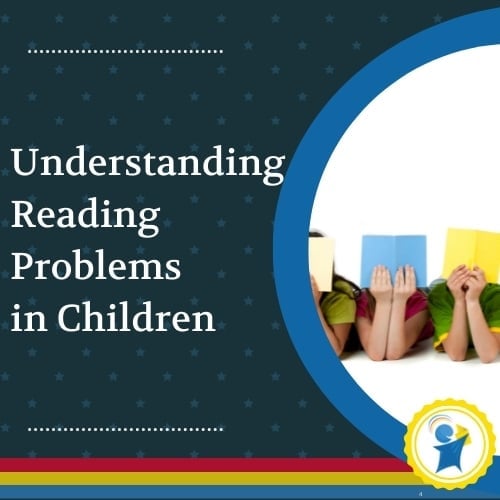
We investigate the symptoms, causes, and prevalence of reading problems and the effects of reading failure. What can parents do to help their children?
.
Table of contents:
- Introduction
- How common are reading problems?
- What are the symptoms of reading problems?
- What are the effects of reading failure?
- What causes reading problems?
- What can parents do to help their children?
- How can Edublox help?
- Key takeaways
Introduction
Most children look forward to learning to read, a process whereby they learn to transform abstract squiggles on a page into meaningful letters, then sounds, then words, and lastly, entire sentences and paragraphs.
Reading represents a code: specifically, an alphabetic code. Many children can break the code after a year of instruction. For at least one in five children, however, the experience is very different. Reading, which seems to come effortlessly for others, appears beyond their grasp. They may have a hard time with word decoding, word recognition, or reading comprehension.
Word decoding is the ability to apply your knowledge of letter-sound relationships and letter patterns to pronounce written words correctly. Word recognition, on the other hand, refers to the presumed mental storage, retrieval, and use of a person’s sight words. Without word recognition, every word would have to be decoded through phonics every time one reads it. Reading comprehension is the ability to read text, process it, and understand its meaning.
In the classroom, reading is king; it is essential for academic success. Teachers, witnessing the gap between good and poor readers widening, may wonder what they are doing wrong. Knowing that reading difficulties have consequences across development, including adult life, parents may question themselves, feeling alternately guilty and angry.
How common are reading problems?
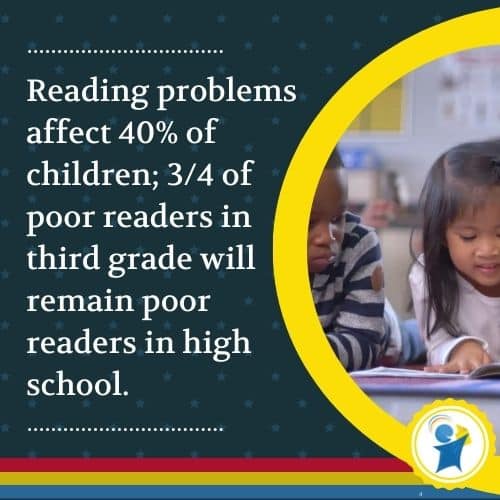
Reading failure is a global problem. Dr. Reid Lyon states that approximately 20 to 30 percent of American children have difficulties learning to read. The Institute for Global Education and Service Learning asserts that the figure is even higher, that 40 percent of American children have difficulty reading or learning to read, and three-quarters of poor readers in third grade will remain poor readers in high school.
The World Literacy Foundation reported that one in five members of the U.K. population is so poor at reading and writing that they struggle to read a medicine label or use a checkbook. According to research, the U.K. illiteracy rate is costing their economy £81 billion a year in lost earnings and increased welfare spending.
The 2006 International Adult Literacy and Life Skills Survey found that approximately 40 percent of employed and 60 percent of unemployed Australians have poor or very poor literacy skills.
What are the symptoms of reading problems?
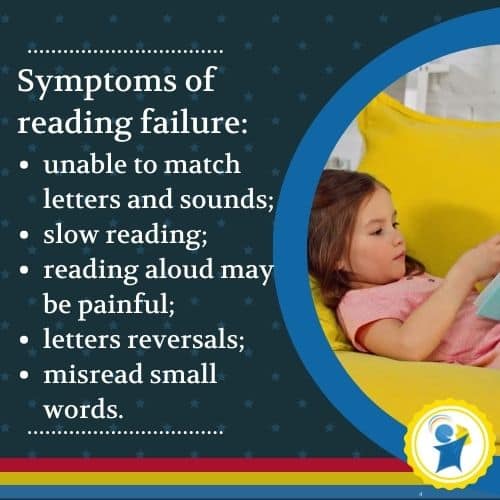
Reading problems can be mild or severe. The term developmental dyslexia is the most widely used term for children who experience severe reading difficulties.
The symptoms below indicate that a child struggles with reading difficulties and therefore needs help:
- They may be unable to match the appropriate letter when given the sound.
- They may try to sound the letters of a word but then be unable to say the correct word. For example, sound the letters c-a-t but then say cold.
- They may read slowly and haltingly, and words they read correctly in one sentence may be misread in a subsequent sentence.
- Oral reading or reading aloud may be harrowing.
- They may reverse letters like b and d, or p and q, or reads words like no for on, rat for tar, won for now, saw for was.
- Put letters in the wrong order, reading felt as left, act as cat, reserve as reverse, expect as except.
- Misread little words, such as a for and, the for a, from for for, then for there, were for with.
- Lose orientation on a line or page while reading, therefore missing lines or rereading previously-read lines.
- Mispronounce words, or put stress on the wrong syllables.
- Foreshorten words, for example, ‘portion’ for proportion.
- Omit prefixes, omit suffixes, or add suffixes.
- Read with poor comprehension.
- Remember little of what was read.
- Often ignore punctuation, omitting full stops or commas.
Not sure? Do this quick reading test
If you’re unsure, do a one-minute oral reading assessment with your child. Look out for the symptoms above, but also count the total words read minus the errors made = words correct per minute.
Steps:
- Select a 200-word passage from a grade-level text.
- Have your child read the passage aloud for precisely one minute.
- Count the total number of words they have read.
- Count the number of errors they have made.
- Subtract the number of errors read per minute from the total number of words read per minute. The result is the average number of words correct per minute (WCPM).
.
Results:
The following are the number of words students should be able to read correctly by the end of each year:
- 1st grade: 60
- 2nd grade: 90
- 3rd grade: 115
- 4th grade: 125
- 5th grade: 135
- 6th grade: 140
- 7th grade: 150
.
What are the effects of reading failure?
Persistent reading failure leads to anguish, embarrassment, and frustration. “Already by the end of first grade, children having difficulty learning to read begin to feel less positive about themselves than when they started school,” says Dr. G. Reid Lyon, former researcher of the National Institute of Health (NIH) in the U.S. “As we follow children through elementary and middle school years, self-esteem and the motivation to learn to read decline even further.
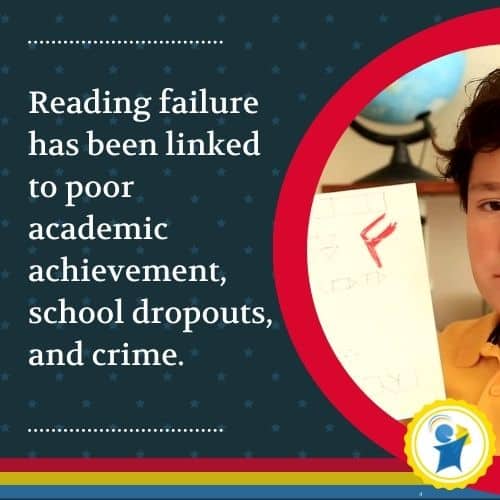
“School dropouts, teenage pregnancy, poor academic achievement, crime — all these are downstream consequences of not learning to read,” continues Lyon. More than three decades of study by the NIH found that of the 10 to 15 percent of children who will eventually drop out of school, more than 75 percent are struggling readers.
Research has proven that there is a close relationship between illiteracy and crime. According to the U.S. Department of Education, 85 percent of all juvenile offenders have reading problems. In the adult population, 60 percent of prison inmates are functionally illiterate, meaning they cannot read or write well enough to deal with the everyday requirements of life.
Strong reading skills, on the other hand, have been linked to personal, social, and economic benefits. According to research published in Psychological Science, reading ability at the early age of seven may be linked to socio-economic status several decades later (Ritchie & Bates, 2013).
What causes reading problems?
Most problems can only be solved if one knows their cause. For example, a disease such as scurvy claimed the lives of thousands of seamen during long sea voyages. However, the disease was cured fairly quickly once the cause was discovered: a vitamin C deficiency. Therefore, a viable point of departure would be to ask the question, What causes reading problems?
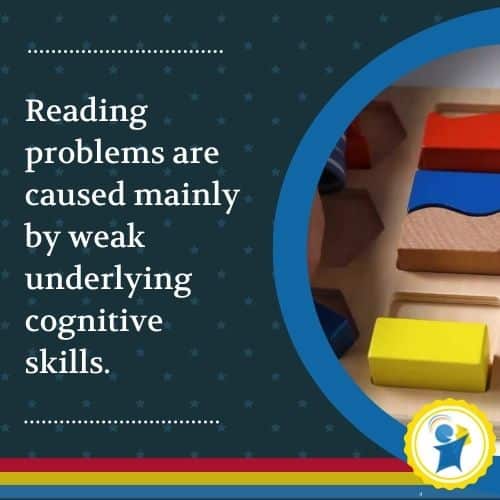
While many other factors may cause and contribute to a reading problem — for example, poor vision and hearing loss — one should not overlook the age-old but ageless principle that learning is a stratified process. This principle is self-evident, yet its significance in teaching reading is often overlooked.
Throughout the world, in all educational systems, it is accepted that a child must start at the lower levels of education and then gradually progress to the higher levels. However, this would have been unnecessary if human learning had not been a stratified process. It would then be possible for the child to enter school at any level and to complete the school years in any order.
Another simple and practical example is the fact that one has to learn to count before it becomes possible to learn to add and subtract. This principle is also of great importance in sports. If we go to a soccer field to watch the coach at work, we shall soon find that he spends a lot of time drilling his players in basic skills, like heading, passing, dribbling, and kicking. The players most proficient at these basic skills usually turn out to be the best in the actual game situation.
In the same way, there are also skills and knowledge that a child must acquire first, before it becomes possible for them to become a good reader.
What skills are involved in learning to read?
While language skills comprise the first rung of the reading ladder, cognitive skills comprise the second. There is a whole conglomeration of cognitive skills that are foundational to reading.
Attention
Attention — or concentration — plays a critical role in learning. Focused attention is the behavioral and cognitive process of selectively concentrating on one aspect of the environment while ignoring other things, while sustained attention refers to the state in which attention must be maintained over time. Both are foundational skills of reading.
Processing
- Visual processing — or visual perception — refers to the ability to make sense of information taken in through the eyes. Visual processing difficulties differ from problems involving sight or sharpness of vision. Difficulties with visual processing affect how visual information is interpreted or processed. A child with visual processing problems may have 20/20 vision but may have difficulties discriminating foreground from background, forms, size, and position in space. They may also be unable to synthesize and analyze.
- Auditory processing refers to the ability to make sense of information taken in through the ears. Auditory processing is not the ability to hear but to interpret, organize and analyze what’s heard.
- Phonological awareness refers to an individual’s awareness of a language’s phonological or sound structure. Phonemic awareness is the ability to hear and manipluate the individual sounds (phonemes) in words, is at the heart of reading, and requires a range of auditory processing skills. Auditory synthesis and auditory analysis, for example, are two processing skills necessary for segmenting and blending sounds.
- Processing speed can be defined as how long it takes to get stuff done.
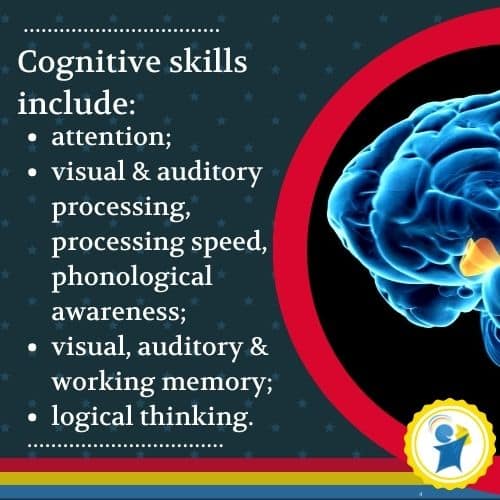
Memory
Memory is the retention of information over time. Although the word memory may conjure up an image of a singular, “all-or-none” process, it is clear that there are many kinds of memory, each of which may, to some extent, be independent of the other.
- Auditory memory involves taking in information that is presented orally, processing that information, storing it in one’s mind, and then recalling what one has heard. Children with poor auditory memory skills may struggle to recognize sounds and match them to letters.
- A good visual memory is essential to build the brain’s visual word form area. This area in the brain allows for recognizing words at a lightning-fast speed.
- Sequential memory requires items to be recalled in a specific order. Many students with reading problems have poor sequential memory.
- Short-term memory refers to a person’s capacity to hold a small amount of information in mind in an active, readily available state for a short period. Research has shown that children with reading problems may suffer from poor short-term and long-term memory.
- Working memory refers to the ability to temporarily hold several facts or thoughts in memory while solving a problem or performing a task.
Logical thinking
Logical thinking is the process in which one uses reasoning consistently to come to a conclusion. Problems or situations that involve logical thinking call for structure, relationships between facts, and chains of reasoning that “make sense.”
My child reads well yet lacks comprehension. Why?
Reading comprehension is the heart and goal of reading. After all, the purpose of all reading is to gather meaning from the printed page. Most people assume that the comprehension of children who are good readers is on track. But three to ten percent of those children don’t understand most of what they’re reading.
There may be other causes, but these are the most common causes of a reading comprehension problem:
Poor vocabulary
Vocabulary is essential for success in reading. Students cannot understand what they read without understanding what most words in the text mean. Decades of research have confirmed vocabulary’s vital role in reading comprehension and students’ overall academic success.
Poor memory skills
Researchers have pinpointed brain activity and understand its role in dyslexia. Still, no functional magnetic resonance imaging or fMRI studies, until recently, have examined the neurobiological profile of those who exhibit poor reading comprehension despite intact word-level abilities.
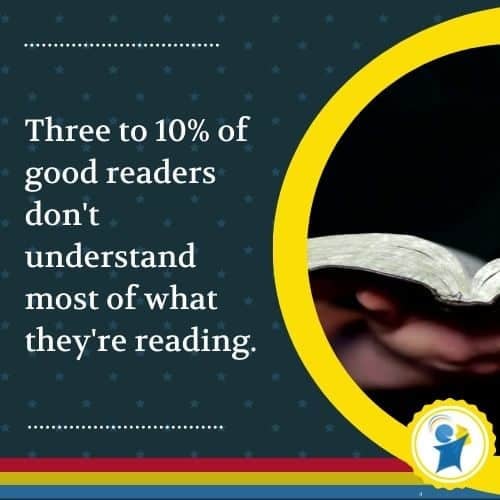
Neuroimaging of children showed that, while reading, the brain function of those with reading comprehension difficulties is quite different and distinct from those with dyslexia. Those with dyslexia exhibited abnormalities in a specific region in the occipital-temporal cortex, a part of the brain associated with successfully recognizing words on a page. On the other hand, those with reading comprehension problems did not show abnormalities in this region. Instead, they showed specific abnormalities in areas typically associated with memory.
That there will be defects in the brain areas concerned with memory makes sense. Several studies have confirmed that reading comprehension relies heavily on working and long-term memory.
Short-term memory holds information in mind for only a few seconds while it is being processed. Long-term memory is where such processed information is permanently stored. Working memory is an intermediary and active memory system in the information-processing area of the brain.
Sentence comprehension depends heavily upon adequate working memory. For example, working memory is required to comprehend sentences that are complex in structure, such as, “The clown that is hugging the boy is kissing the girl.” It helps us interpret lengthy sentences like, “Do every other problem on page fifteen and all of the problems on page sixteen before checking your answers in the back of the book.” We use working memory when preservation of word order (syntax) is essential to correctly understand a sentence like, “It was the boy’s ball and not the girl’s that was dirty.”
Poor logical thinking skills
The relationship between logical thinking and reading comprehension is well-established in the literature. For example, it has been said, “there is no reading without reasoning,” and even that reading is reasoning.
What can parents do to help their children?
If your child is having trouble learning to read, the best approach is to take immediate action. Ninety-five percent of poor readers can be brought up to grade level if they receive effective help early. However, the longer you wait to get help for a child with reading problems, the harder it will be for them to catch up.
Reading consultant Susan Hall urges parents to trust their intuition. “Parent after parent tell me about feeling there was a problem earlier on, yet being persuaded to discount their intuition and wait to seek help for their child. Later, when they learned time is of the essence in developing reading skills, the parents regretted the lost months or years.”
How can Edublox help?
Edublox specializes in cognitive training that makes learners smarter and helps them read faster, easier, and better. We offer computer-based help, as well as live online tutoring aligned with best practices and the latest neuroscientific research findings.
Watch our customer review playlist below and see how children with reading difficulties, dyslexia, and other learning disabilities are being helped. Our live online tutoring services are offered to students in the United States, Canada, Australia, and elsewhere.
Book a free consultation to discuss your child’s learning needs.


